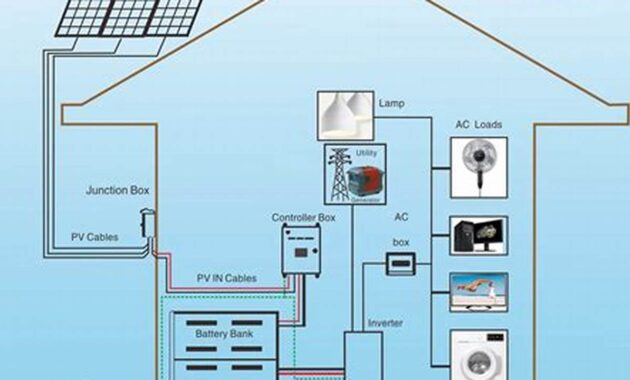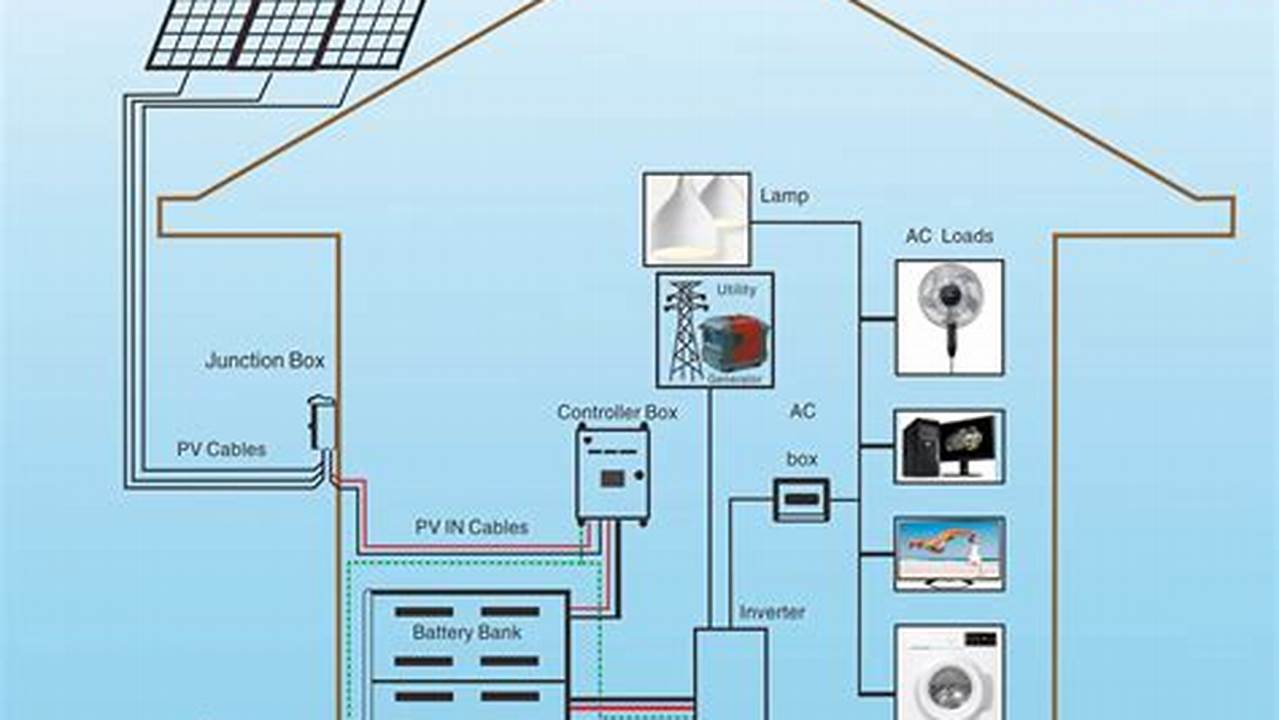
Planning and installing a solar system for your home can be a rewarding experience, providing significant benefits in terms of energy savings, environmental sustainability, and increased property value. A well-designed solar system can generate clean, renewable energy, reducing your reliance on fossil fuels and lowering your monthly electricity bills.
Designing a solar system for your home requires careful consideration of several factors, including the size of your home, your energy consumption patterns, the amount of sunlight your property receives, and your budget. It’s important to consult with a qualified solar installer to determine the optimal system size and configuration for your specific needs. They can also provide guidance on the latest solar technologies, financing options, and any applicable government incentives.
Installing a solar system can be a complex process, but it’s generally divided into the following steps: site assessment, system design, equipment procurement, installation, and inspection. It’s important to work with a reputable solar installer who has experience in designing and installing solar systems for residential properties.
FAQs on How to Design a Solar System for Home
Here are some frequently asked questions and answers on how to design a solar system for home:
Question 1: What are the benefits of installing a solar system for my home?
Installing a solar system for your home offers numerous benefits, including reducing your electricity bills, increasing your energy independence, and enhancing your property’s value. Solar systems also provide environmental benefits by generating clean, renewable energy and reducing greenhouse gas emissions.
Question 2: How do I determine the size of solar system I need for my home?
The size of the solar system you need will depend on several factors, including your energy consumption, the amount of sunlight your property receives, and your budget. It’s recommended to consult with a qualified solar installer to determine the optimal system size for your specific needs.
Question 3: What are the different types of solar panels available?
There are two main types of solar panels available for residential use: monocrystalline and polycrystalline. Monocrystalline panels are more efficient and durable, but they are also more expensive. Polycrystalline panels are less efficient, but they are more affordable.
Question 4: How much does it cost to install a solar system for my home?
The cost of installing a solar system for your home will vary depending on the size of the system, the type of solar panels you choose, and the complexity of the installation. However, you can expect to pay between $15,000 and $25,000 for a typical residential solar system.
Question 5: What are the financing options available for solar system installations?
There are several financing options available for solar system installations, including solar loans, leases, and power purchase agreements (PPAs). Solar loans allow you to borrow the money upfront and pay it back over time. Solar leases allow you to lease the solar system from a solar company and pay a monthly lease payment. PPAs allow you to purchase the electricity generated by the solar system from a solar company at a fixed rate.
Question 6: What is the return on investment (ROI) for a solar system installation?
The ROI for a solar system installation will vary depending on several factors, including the cost of electricity in your area, the amount of sunlight your property receives, and the size of the solar system you install. However, you can expect to see a significant reduction in your electricity bills and an increase in your property value, which can lead to a positive ROI over time.
Installing a solar system for your home can be a smart investment that can save you money on your electricity bills, increase your energy independence, and reduce your environmental impact.
To learn more about solar system design for home, consult with a qualified solar installer or visit the website of the Solar Energy Industries Association (SEIA).
Tips for Designing a Solar System for Home
Designing a solar system for your home can be a complex process, but it’s important to take the time to do it right. By following these tips, you can ensure that your solar system is properly sized, designed, and installed to meet your specific needs.
Tip 1: Determine Your Energy Needs
The first step in designing a solar system for your home is to determine your energy needs. This can be done by looking at your utility bills or by using an online energy calculator. Once you know how much energy you use, you can start to size your solar system.
Tip 2: Choose the Right Solar Panels
There are many different types of solar panels available, so it’s important to choose the right ones for your needs. Monocrystalline panels are the most efficient, but they are also the most expensive. Polycrystalline panels are less efficient, but they are more affordable. Thin-film panels are the least efficient, but they are also the most flexible and lightweight.
Tip 3: Size Your Solar System
The size of your solar system will depend on your energy needs and the amount of sunlight your property receives. A qualified solar installer can help you determine the optimal system size for your home.
Tip 4: Choose a Qualified Solar Installer
It’s important to choose a qualified solar installer to design and install your solar system. A qualified installer will have the experience and expertise to ensure that your system is properly installed and meets all safety codes.
Tip 5: Get Permits and Inspections
Before you install your solar system, you will need to get permits from your local building department. You will also need to have your system inspected by a qualified electrician to ensure that it is safe and meets all electrical codes.
Tip 6: Monitor Your Solar System
Once your solar system is installed, it’s important to monitor it regularly to ensure that it is performing as expected. You can do this by using a solar monitoring system or by simply checking your utility bills to see how much solar energy you are generating.
Tip 7: Maintain Your Solar System
Solar systems require very little maintenance, but it’s important to keep them clean and free of debris. You should also have your system inspected by a qualified solar installer every few years to ensure that it is operating safely and efficiently.
By following these tips, you can design a solar system for your home that will meet your specific needs and provide you with clean, renewable energy for years to come.
Summary of Key Takeaways:
- Determine your energy needs before sizing your solar system.
- Choose the right solar panels for your needs and budget.
- Size your solar system to meet your energy needs and the amount of sunlight your property receives.
- Choose a qualified solar installer to design and install your solar system.
- Get permits and inspections before installing your solar system.
- Monitor your solar system regularly to ensure that it is performing as expected.
- Maintain your solar system by keeping it clean and free of debris, and having it inspected by a qualified solar installer every few years.
Conclusion:
Designing a solar system for your home can be a rewarding experience. By following these tips, you can ensure that your solar system is properly sized, designed, and installed to meet your specific needs. Solar energy is a clean, renewable source of energy that can help you save money on your utility bills and reduce your environmental impact.
Conclusion
Designing a solar system for home can be a complex but rewarding process. By following the steps and tips outlined in this article, you can ensure that your solar system is properly sized, designed, and installed to meet your specific needs. Solar energy is a clean, renewable source of energy that can help you save money on your utility bills and reduce your environmental impact.
As the world faces the challenges of climate change and rising energy costs, solar energy is becoming an increasingly attractive option for homeowners. By investing in a solar system, you can take control of your energy future and make a positive impact on the environment. We encourage you to explore the resources available to you and consider making the switch to solar energy.
